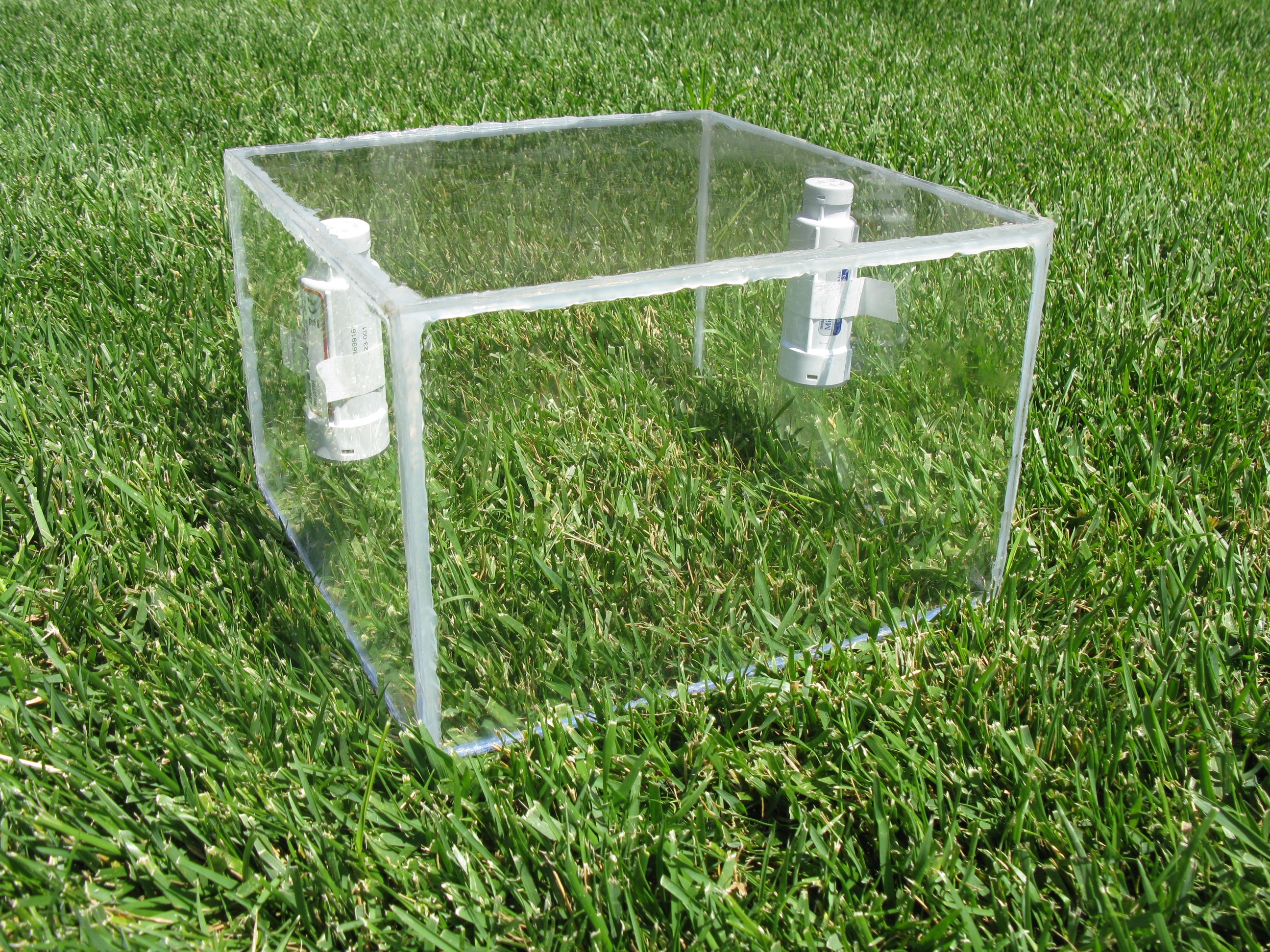In summer 2010, Los Angeles was losing about 100 gallons of water per person per day to the atmosphere through the evaporation and plant uptake of lawns and trees. Lawns accounted for 70 percent of the water loss, while trees accounted for 30 percent, according to a University of Utah study published in Water Resources Research.
The results, based on measurements taken before Los Angeles enacted mandatory watering restrictions in 2014, shows a pattern of systemic overwatering in the city’s lawns, and a surprising water efficiency in tree cover. Further, the researchers found a correlation between water loss and household income.
“The soil was so moist that plants were not limited in water use,” says Elizaveta Litvak, postdoctoral scholar and first author of the new study. “It was the maximum water loss possible.”
 Evaporation + Transpiration = Evapotranspiration, or ET
Evaporation + Transpiration = Evapotranspiration, or ET
The water loss that Litvak and Diane Pataki, professor of biology, measured is best described as “evapotranspiration,” a measurement that adds together the evaporation of water from soil and the release of water vapor, called transpiration, from plants. Evapotranspiration (ET) rates depend on several factors, including plant type, temperature, humidity and the amount of water in the soil. For every condition, scientists can calculate a potential ET rate that estimates the maximum amount of ET possible, provided that abundant water is available.
And according to Litvak’s measurements, LA’s soils were an abundant source of water. Imagine laying a soaking wet towel out to dry on a hot summer day. It’s a thoroughly wet surface, and should evaporate at the highest possible rate. Water loss from an over-irrigated lawn is that much and more, because transpiration from the grass pumps even more water from the soil to the atmosphere. “Plants add to evaporation,” Litvak says. “This is the reason this doesn’t look good.”

PHOTO CREDIT: Elizaveta Litvak.
Litvak’s mini-chamber used to measure ET in urban lawns.
To measure ET from lawns, Litvak devised a shoebox-size chamber that could measure rapid changes of the temperature and humidity above the grass. She and her colleagues traveled around LA in the summer of 2010 and the winter of 2011 taking measurements to develop a mathematical model of ET rates from lawns under different conditions.
Waterstyles of the rich and famous
When later analyzing the data, they tested a hypothesis that wealthier neighborhoods had more plants than poorer areas. ET rates in the wealthiest neighborhoods, they found, were roughly twice those of poorer neighborhoods. That’s probably due to a variety of factors, Litvak and Pataki say, including the large lot sizes of wealthier properties.

PHOTO CREDIT: Courtesy Elizaveta Litvak
Elizaveta Litvak measuring solar irradiance at the Los Angeles Arboretum and Botanic Garden.
Trees emerged as the water-saving heroes of the study, utilizing far less water than grass. That again is likely due to several factors. Trees have much lower leaf surface area, and tree leaves aren’t directly irrigated, so they are less prone to evaporation. Also, trees regulate their transpiration rate in response to the humidity in the air around them. Under dry conditions, trees will austerely reign in transpiration.
“I have been surprised that we can maintain the tree canopy of LA with relatively little water,” Pataki says. “There’s this assumption that we need abundant irrigation to support trees. We can drastically reduce water use and still maintain the tree canopy.”
Long-term changes
Much has changed in California’s hydrology since the measurements leading to these results were taken, however. In the face of historic drought, California enacted mandatory watering restrictions in 2014. In spring 2017 the restrictions were lifted, as the state enjoyed abundantly wet weather. The long-term effects of the watering restrictions aren’t yet known.
“There was a financial incentive program to remove lawns,” Pataki says. “People did.”
But watering restrictions hit miserly trees as much as spendthrift lawns. “When limiting irrigation, trees might not receive enough water,” Litvak says. “Trees don’t need much, but if irrigation stops completely they may die.”
“California’s recent drought highlights the need for urban as well as agricultural conservation,” says Tom Torgersen, program director in the National Science Foundation (NSF)’s Division of Earth Sciences, which funded the research along with NSF’s Divisions of Environmental Biology; Integrative Organismal Systems; and Behavioral and Cognitive Sciences. “For Los Angeles, the greatest evapotranspiration was due to turf grass and seed-producing trees; palm trees made very small contributions. Both provide an alleviation of the heat island effect and reduce the need for air conditioning. However, the benefit is not evenly shared. The higher the median income, the greater the local evapotranspiration, indicating cooler temperatures there and higher temperatures in poorer sections of the city.”
Pataki says it’s too early to tell whether watering patterns and landscaping choices will return to their pre-drought excesses. “Whether that changed people’s preferences for landscapes in a long-lasting way – that’s something we still need to study.”
Find the full study here.




